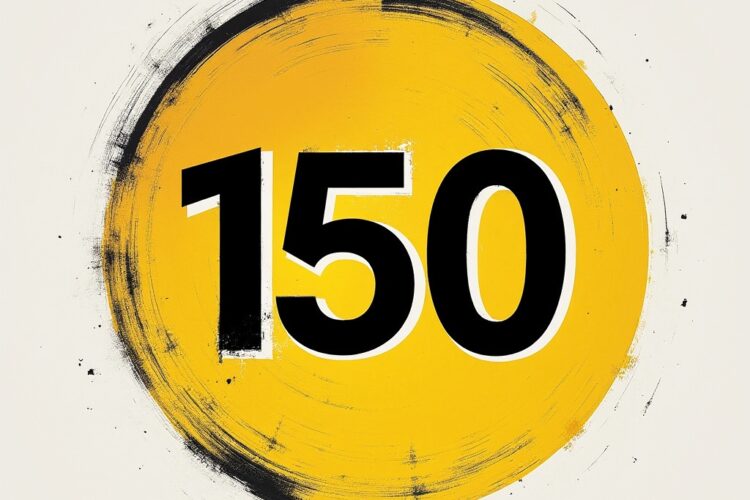The Dunbar number is a theoretical cognitive limit to the number of stable social relationships that an individual can maintain. It is thought to be around 150 people, with smaller circles of relationships within that larger network. The closest and most intimate circle consists of only about five people. The theory is based on the idea that the size of the human brain limits the number of social relationships that a person can manage effectively. The concept has been applied to various fields, including anthropology, psychology, and sociology, and has influenced our understanding of social networks and human behavior.
Long Version
The Dunbar number is a theoretical cognitive limit to the number of stable social relationships that an individual can maintain. The concept is named after the British anthropologist Robin Dunbar, who developed the theory in the 1990s. Dunbar’s research suggests that the limit is around 150 people, although this number can vary depending on a variety of factors.
The Dunbar number is based on the idea that humans have a limited amount of cognitive and emotional resources that can be devoted to social relationships. These resources include things like memory, attention, and emotional investment. As a result, there is a limit to the number of social relationships that an individual can maintain over time.
Dunbar arrived at the number 150 by studying the social networks of people in various societies. He observed that the number of people with whom individuals maintained regular contact tended to cluster around this number, regardless of factors like age, gender, or culture. Dunbar also found that there were progressively smaller circles of relationships within that larger network, with the closest and most intimate circle consisting of only about five people. This is known as the Dunbar core.
The Dunbar number has been widely cited and used in a variety of fields, including anthropology, sociology, psychology, and marketing. It has been applied to everything from understanding social structures in small communities to predicting the size of online social networks.
However, it’s important to note that the Dunbar number is a theoretical concept and that individual experiences may vary. The number of social relationships that an individual can maintain may be influenced by a variety of factors, including personality, social environment, and life circumstances. Additionally, the Dunbar number may not apply to all types of relationships, such as those that are based on shared interests or goals rather than social proximity.
Despite these limitations, the Dunbar number remains a useful tool for understanding human social behavior and the limits of social cognition. By recognizing the cognitive and emotional constraints on social relationships, we can better understand how and why people form and maintain social networks over time.
Words Worth Noting
Robin Dunbar, Dunbar’s number, cognitive limit, social relationships, social networks, anthropology, psychology, sociology, emotional investment, memory, attention, social proximity, human behavior, social cognition, online social networks, small communities, close relationships, social environment, shared interests, social circles, stable relationships, friendship, social capacity, social connections, social science, interpersonal relationships, social interactions, relationship maintenance, intimacy, communication.
Hashtags For Social Media
#DunbarNumber #SocialCognition #SocialBehavior #SocialNetworks #RobinDunbar #Psychology #Anthropology #Sociology #Marketing #Relationships #Friendships #CognitiveLimit #EmotionalInvestment #Attention #Memory #Community #OnlineSocialNetworks #HumanBehavior #SocialProximity #SharedInterests #SocialStructures #CognitiveResources #EmotionalResources #SocialConnections #HumanConnections #PersonalNetwork #FriendshipCircle #CloseFriends #SocialSciences #SocialStudies
Related Questions, Words, Phrases
what is the dunbar number | can you explain the dunbar number | what does the dunbar number mean | how many people can you maintain social relationships with | what is the cognitive limit to social relationships | who developed the theory of the dunbar number | what is the dunbar core | what is the social network size of humans | what is the maximum number of stable social relationships | what factors determine the number of social relationships a person can maintain | what is the average social network size for people | what are the progressively smaller circles of relationships within the dunbar network | why is the dunbar number important in social sciences | what are the cognitive and emotional resources that can be devoted to social relationships | what is the relationship between memory and social relationships | what is the relationship between attention and social relationships | what is the relationship between emotional investment and social relationships | what is the relationship between social proximity and social relationships | what is the relationship between shared interests and social relationships | what are the limitations of the dunbar number | what is the impact of personality on the number of social relationships | what is the impact of social environment on the number of social relationships | what is the impact of life circumstances on the number of social relationships | what is the relevance of the dunbar number in understanding human behavior






